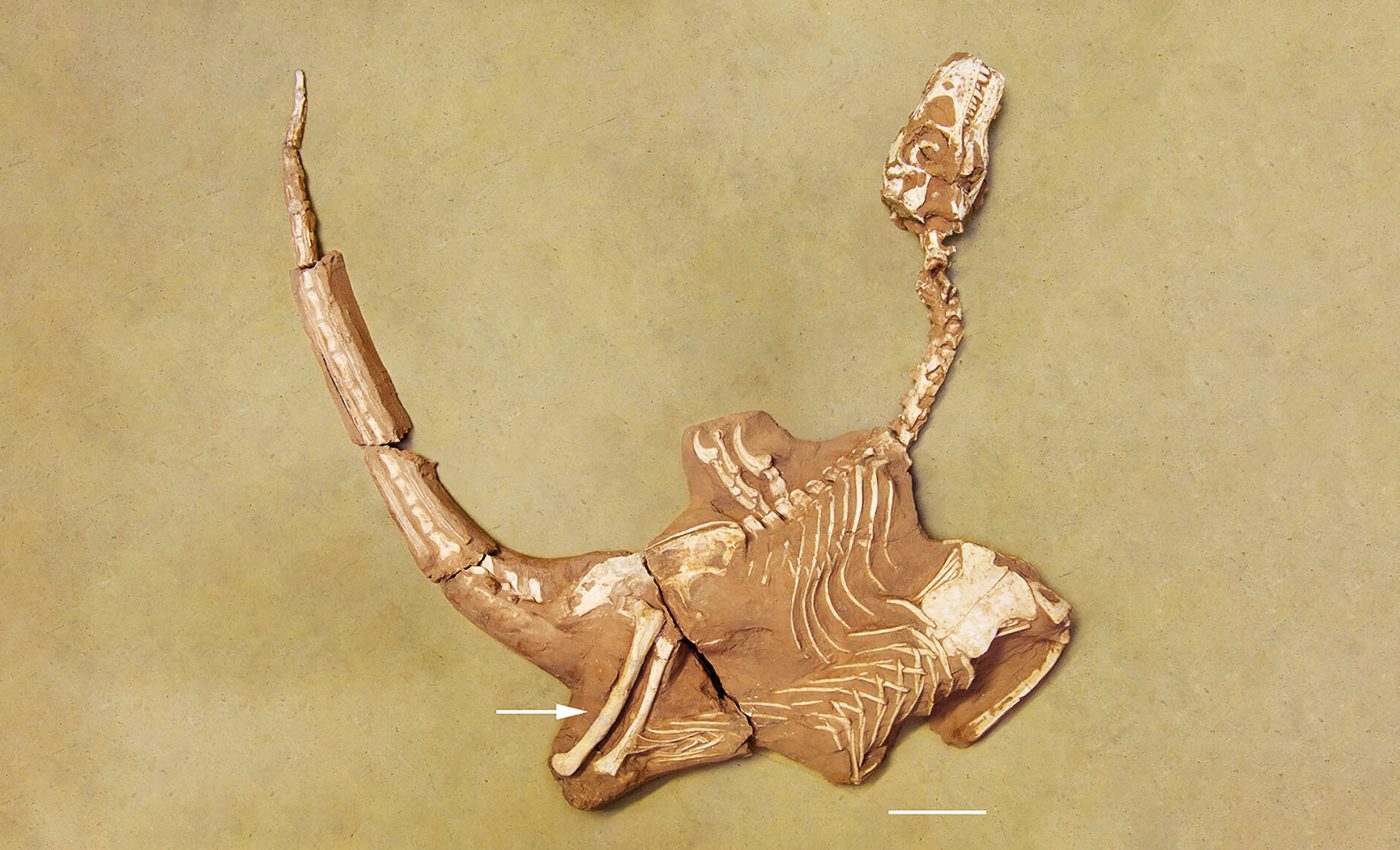
Dinosaur discovered that killed with its thumbs instead of claws
The Gobi Desert just gained another actor in its cast of Late Cretaceous characters. Paleontologists have unveiled Shri rapax, a stocky, two legged predator with a body that stretched only about 6.5 feet (2 meters) but had some serious weaponry.
Unearthed after a winding journey through private collections, and eventually repatriated to Mongolia, the fossil shows a creature that roamed dune laced lakeshores between 75 and 71 million years ago.
Its most arresting feature is a thumb claw measuring 3.1 in (nearly 8 cm) long, which is almost double that of a similarly sized Velociraptor.
Andrea Cau, an independent Italian paleontologist who led the description, worked alongside scientists from the Royal Belgian Institute of Natural Sciences and North Carolina State University (NCSU).
Shri rapax hunted with hands, not feet
The hands of this new dromaeosaurid are 150 percent more robust than those of Velociraptor, even though the two raptors share a comparable body length.
Digital scans reveal thick finger bones capped by an oversized claw with an outer curve that is 162 percent the length of the supporting phalanx – this is a proportion unmatched among known raptors.
“The rapacious features we see in the hand signal a predator that relied on pure grip strength rather than slashing kicks,” said Cau.
By contrast, the famous sickle-shaped toe claw of Velociraptor is better suited to quick, repeated strikes. Shri rapax appears to have shifted that killing focus to its thumbs, thus freeing its feet for balance.
Big claws helped grab bigger prey
Team member Tsogtbaatar Chinzorig noted that the middle claw’s 3.1 inch (8 cm) span “likely enabled it to grasp and restrain relatively large prey.”
Modern birds of prey offer a parallel: talons grow disproportionately bigger in species that tackle animals heavier than themselves, a link confirmed by biomechanical work on eagle and hawk feet.
Applying that principle to Shri rapax suggests that these dinosaurs targeted bigger and bulkier prey than the lizards or small mammals favoured by many Gobi carnivores of similar size.
Its stout skull, digitally reconstructed from CT data, hints at a bite built to finish the job once those powerful hands locked on.
It fought prey face to face
The bones come from the Djadokhta Formation, a wind blown world that also preserved a Velociraptor locking jaws with a ceratopsian named Protoceratops.
Those desert showdowns often ended badly for predator and prey alike, as the famous “fighting dinosaurs” pair demonstrates.
Shri rapax brings a fresh twist to that narrative. Instead of pouncing with toe talons, it may have wrestled stocky herbivores face to face, anchoring itself with those muscular thumbs while delivering short, crushing bites.
That strategy could explain why its pubic bones tilt slightly less backward than in Velociraptor – a more upright stance may have helped brace against struggling prey.
Arm bones also show enlarged muscle scars, especially for the biceps, hinting at strokes powerful enough to reel opponents inward.
Shri rapax lived with many desert raptors
The discovery of Shri rapax adds to the already dense concentration of mid-sized theropods in the Gobi fossil record.
At least three, closely related raptor species now appear to have shared overlapping environments within the Djadokhta Formation, each with different adaptations to prey size, skull strength, and forelimb anatomy.
That level of ecological diversity in a single predator guild is rare in modern ecosystems, making the Late Cretaceous Gobi a unique case for studying niche partitioning.
Its presence also challenges previous assumptions about faunal turnover between Mongolian formations.
While many Djadokhtan and Baruungoyotan species appear in different sedimentary contexts, the morphological similarities and close phylogenetic ties between Shri rapax and Shri devi suggest that geographic or environmental barriers, not just time, may have shaped their evolution.
More precise dating and fossil finds could help clarify whether these raptors coexisted or followed each other in rapid succession.
It evolved differently from its cousin
Morphological analyses place Shri rapax as the sister species of Shri devi, named in 2021 from rock layers a few million years younger.
The two share short snouts but diverge sharply in limb anatomy, suggesting niche partitioning within a single raptor lineage.
Broader studies of raptor skull shapes show that bite mechanics, not just claws, steer dietary specialization across the group. Shri rapax fits that trend, pairing a reinforced jaw with hardware built for grappling.
Its discovery also undercuts the idea that all mid-sized Gobi predators hunted in the same way. Even among close cousins, evolution seems to have encouraged experimental toolkits to avoid competition.
Future field seasons will test whether additional Shri remains turn up alongside fossils of armored ankylosaurs or juvenile ceratopsians, the prey most logically matched to a hand first hunting style.
What it means for raptor science
Shri rapax reminds researchers that predatory dinosaurs were not defined solely by iconic toe claws. Hands, skulls, and tails combined in unique ways to solve ecological puzzles.
The find highlights how repatriated specimens can rewrite textbooks, years after they were first dug up. Because the fossil’s journey is now documented, it can legally anchor a new species and invite further study.
Its anatomy will likely enter computer models that explore strength limits of dinosaur limbs, helping scientists estimate muscle mass and pulling force.
Those numbers could verify whether the thumb claw truly outperformed the famous foot claw in terms of absolute grip.
Finally, the discovery emphasizes the value of Mongolia’s desert sites, where fine sand and rapid burial continue to freeze dramatic moments of Mesozoic life in place for modern science.
The study is published in Historical Biology.
—–
Like what you read? Subscribe to our newsletter for engaging articles, exclusive content, and the latest updates.
Check us out on EarthSnap, a free app brought to you by Eric Ralls and Earth.com.
—–













